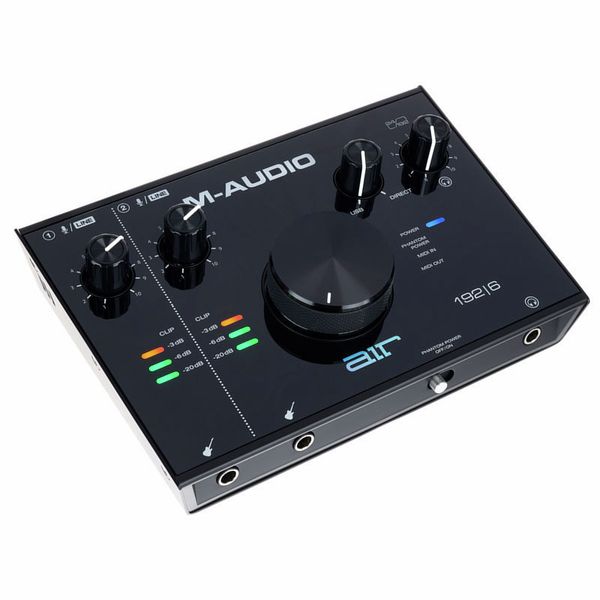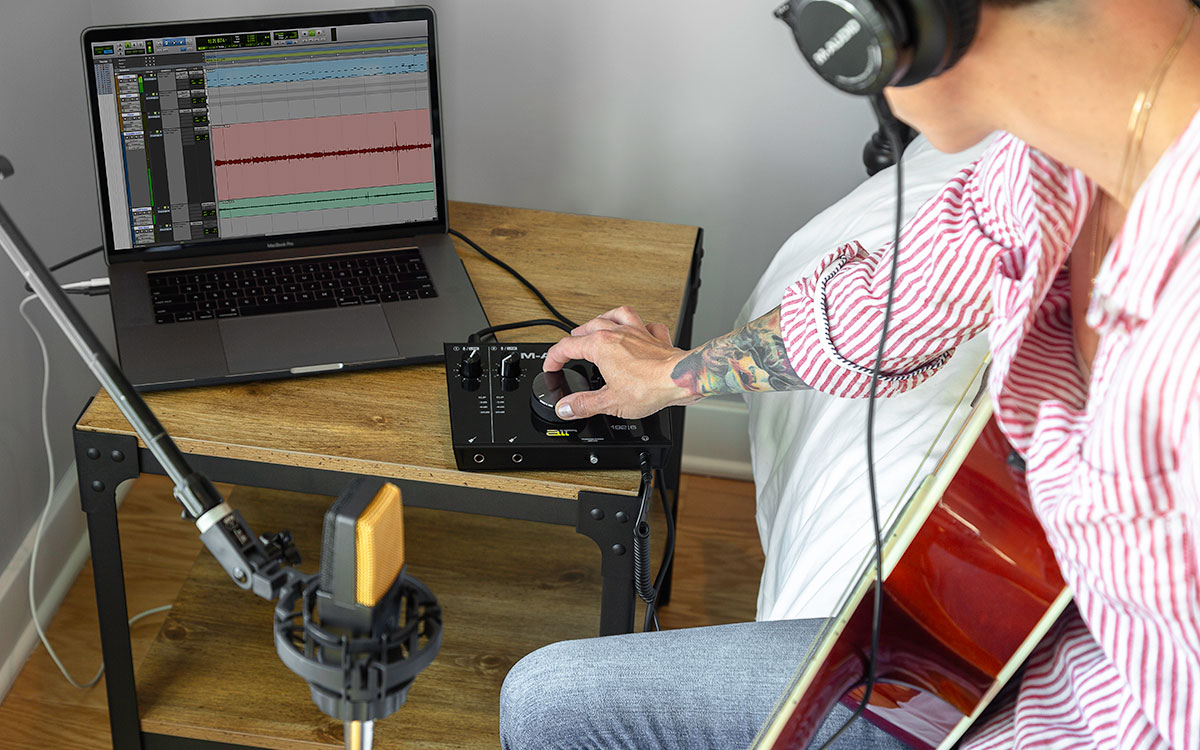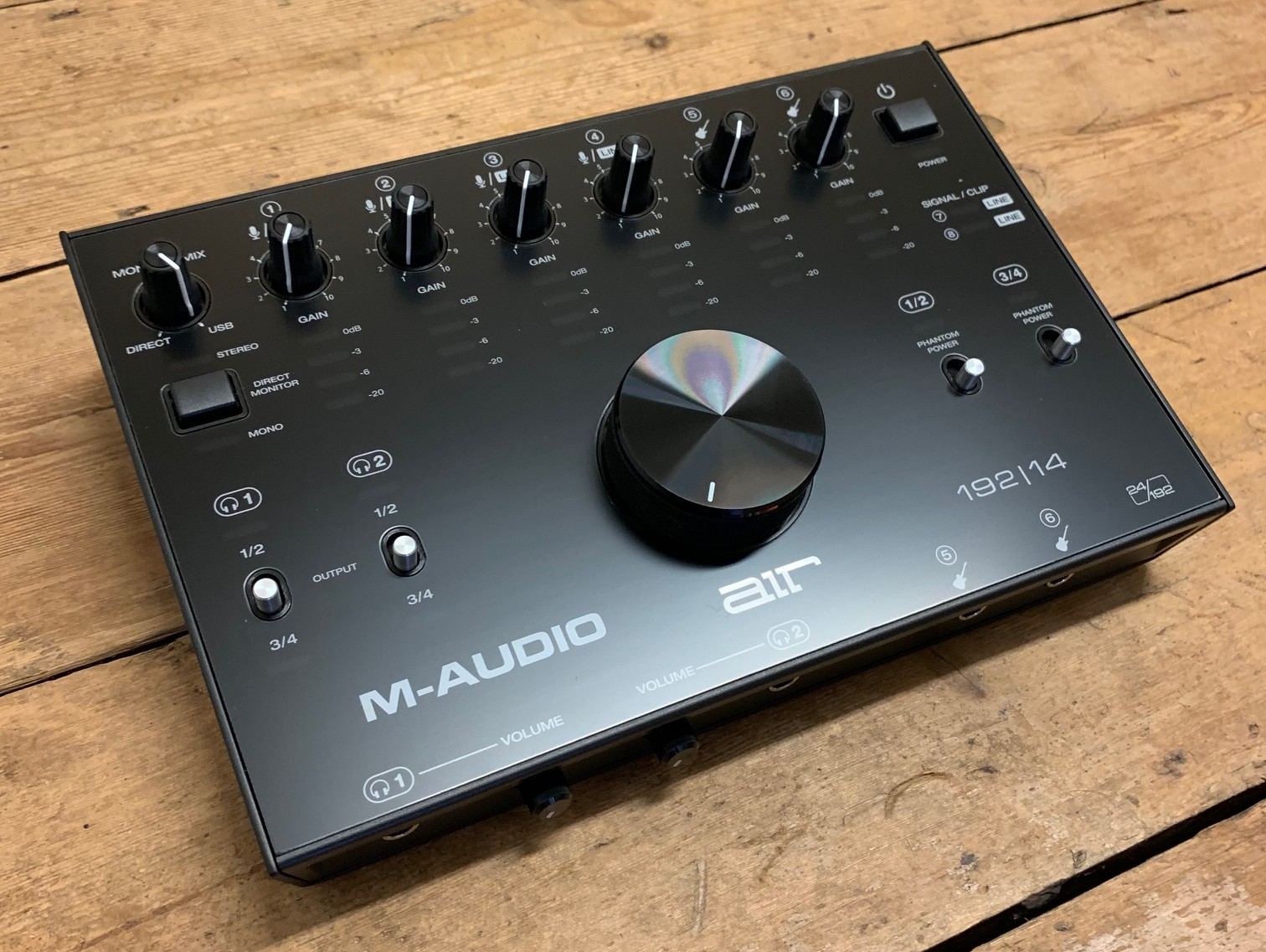

The spec of the interface is impressive right off the bat, with four mic/line inputs on combo ¼-inch/XLR sockets round the back, two dedicated instrument-level inputs on ¼-inch sockets at the front, plus a further two line-level ¼-inch inputs on the back panel.

The unusually shaped desktop module format is stylish and solid, with a good feel to the knobs and switches, plus high-quality connectors all round.

Weight isn’t necessarily a guarantee of quality, but in this case it’s an obvious mark of good build quality. Two things immediately leap out about the 192|14 straight out of the box: it’s small, but it’s remarkably dense. The real surprise here is just how affordable that level of connectivity has become a few years ago you’d have expected to pay at least £500 for a similar feature set, but the Air 192|14 clocks in at well under £300, planting it firmly in the realm of affordable entry-level interfaces. Heading up the brand’s new Air interface range, the 192|14 boasts eight analogue inputs and four outputs (plus two headphone sockets) at 24-bit, 192 kHz resolution. M-Audio’s new flagship interface is a prime example. Audio interfaces, for example, are absolutely essential to the way most of us create music, allowing us to get sounds in and out of a computer, but when did you last see producers getting excited about one on Instagram?Ĭonsequently, the evolution of audio interfaces feels a bit like sitting on the beach and watching the tide come in: at any given moment it doesn’t feel like much is happening, but if you take your eyes off it for too long you’ll suddenly find your clothes getting wet. Meanwhile, other music making essentials get overlooked by comparison. New releases feel like milestones in the history of music tech, sparking feverish social media buzz and endless debate about features and sounds. Synths and drum machines get all the glory. M-Audio’s new flagship interface offers a huge feature set at an affordable price.


 0 kommentar(er)
0 kommentar(er)
